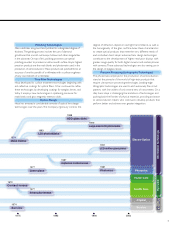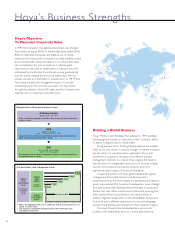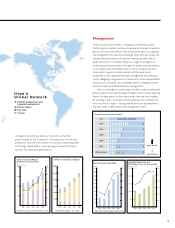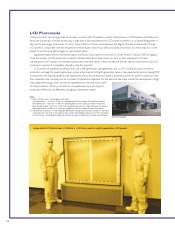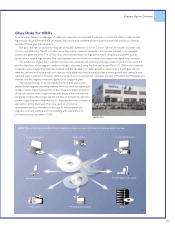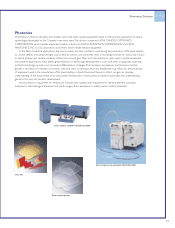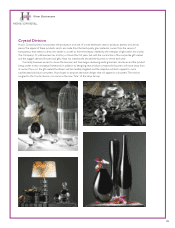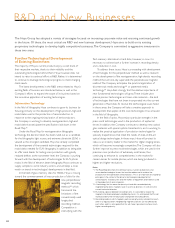Pentax 2006 Annual Report Download - page 19
Download and view the complete annual report
Please find page 19 of the 2006 Pentax annual report below. You can navigate through the pages in the report by either clicking on the pages listed below, or by using the keyword search tool below to find specific information within the annual report.
Information
Technology Electro-Optics Division
(Aspherical lens)
(Spherical lens)
Light axis
Focal plane
Light axis
Focal plane
Comparison between aspherical and spherical glass lenses
Feature of aspherical molding lens
Aspherical molding lens that enables manufacturing high-precision
lens without polishing process. Because the aberration (distortion)
decreases compared with the spherical lens, the miniaturization and
degree of freedom of the design of the product have been improved
since it reduced the number of lenses used.
Optical Lenses
Hoya is one of the few manufacturers able to undertake integrated production of lenses, from the production of the glass
materials through to the actual optical lenses. Glass lenses can be broadly broken down into two categories: molded glass lenses
(aspherical lenses) and polished glass lenses (spherical lenses). Glass molded aspherical lenses are able to correct superbly for
aberrations. They permit shorter focusing distances, and fewer lens elements need to be used. Because of this, they help to
reduce the size and weight of optical equipment. The Company’s molded glass aspherical lenses take advantage of these
characteristics chiefly for digital cameras, digital video cameras and camera-equipped mobile phones.
During the fiscal year ended March 31, 2006, Hoya commenced large-scale production of lenses for use in camera-equipped
mobile phones. Until recently, it was usual for such lenses to be made of plastic, but now that mobile phones are being produced
with high-resolution cameras of 2 megapixels and above, the demand for aspherical glass molded lenses has jumped. The
Company has been making camera lenses for mobile phones at its plant in Suzhou, China, where production commenced in
August 2004. Demand is expected to grow even further, and Hoya is currently pushing ahead with plans to further expand
production capability.
Camera lenses for mobile phones must meet even stricter optical performance standards than those used in digital cameras,
and large-scale, low-cost production facilities are also required. In addition to devoting resources to the development of these
lenses, Hoya is working to incorporate its own proprietary techniques into its production processes, so that it can offer products
that precisely meet the needs of its clients.
Hoya’s glass molded aspherical lenses used for camera lenses
for mobile phones with upgraded resolution


